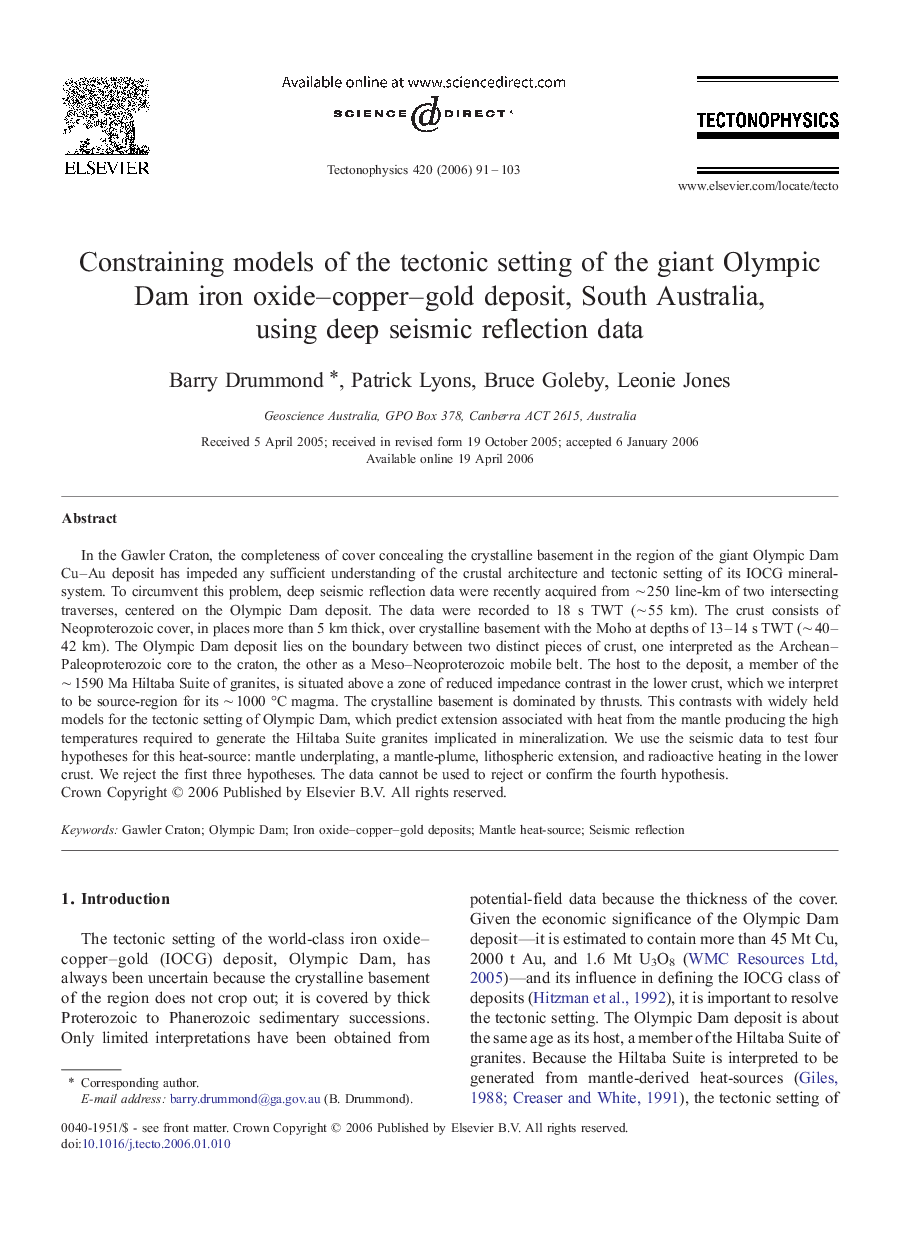| Article ID | Journal | Published Year | Pages | File Type |
|---|---|---|---|---|
| 4695109 | Tectonophysics | 2006 | 13 Pages |
In the Gawler Craton, the completeness of cover concealing the crystalline basement in the region of the giant Olympic Dam Cu–Au deposit has impeded any sufficient understanding of the crustal architecture and tectonic setting of its IOCG mineral-system. To circumvent this problem, deep seismic reflection data were recently acquired from ∼ 250 line-km of two intersecting traverses, centered on the Olympic Dam deposit. The data were recorded to 18 s TWT (∼ 55 km). The crust consists of Neoproterozoic cover, in places more than 5 km thick, over crystalline basement with the Moho at depths of 13–14 s TWT (∼ 40–42 km). The Olympic Dam deposit lies on the boundary between two distinct pieces of crust, one interpreted as the Archean–Paleoproterozoic core to the craton, the other as a Meso–Neoproterozoic mobile belt. The host to the deposit, a member of the ∼ 1590 Ma Hiltaba Suite of granites, is situated above a zone of reduced impedance contrast in the lower crust, which we interpret to be source-region for its ∼ 1000 °C magma. The crystalline basement is dominated by thrusts. This contrasts with widely held models for the tectonic setting of Olympic Dam, which predict extension associated with heat from the mantle producing the high temperatures required to generate the Hiltaba Suite granites implicated in mineralization. We use the seismic data to test four hypotheses for this heat-source: mantle underplating, a mantle-plume, lithospheric extension, and radioactive heating in the lower crust. We reject the first three hypotheses. The data cannot be used to reject or confirm the fourth hypothesis.
